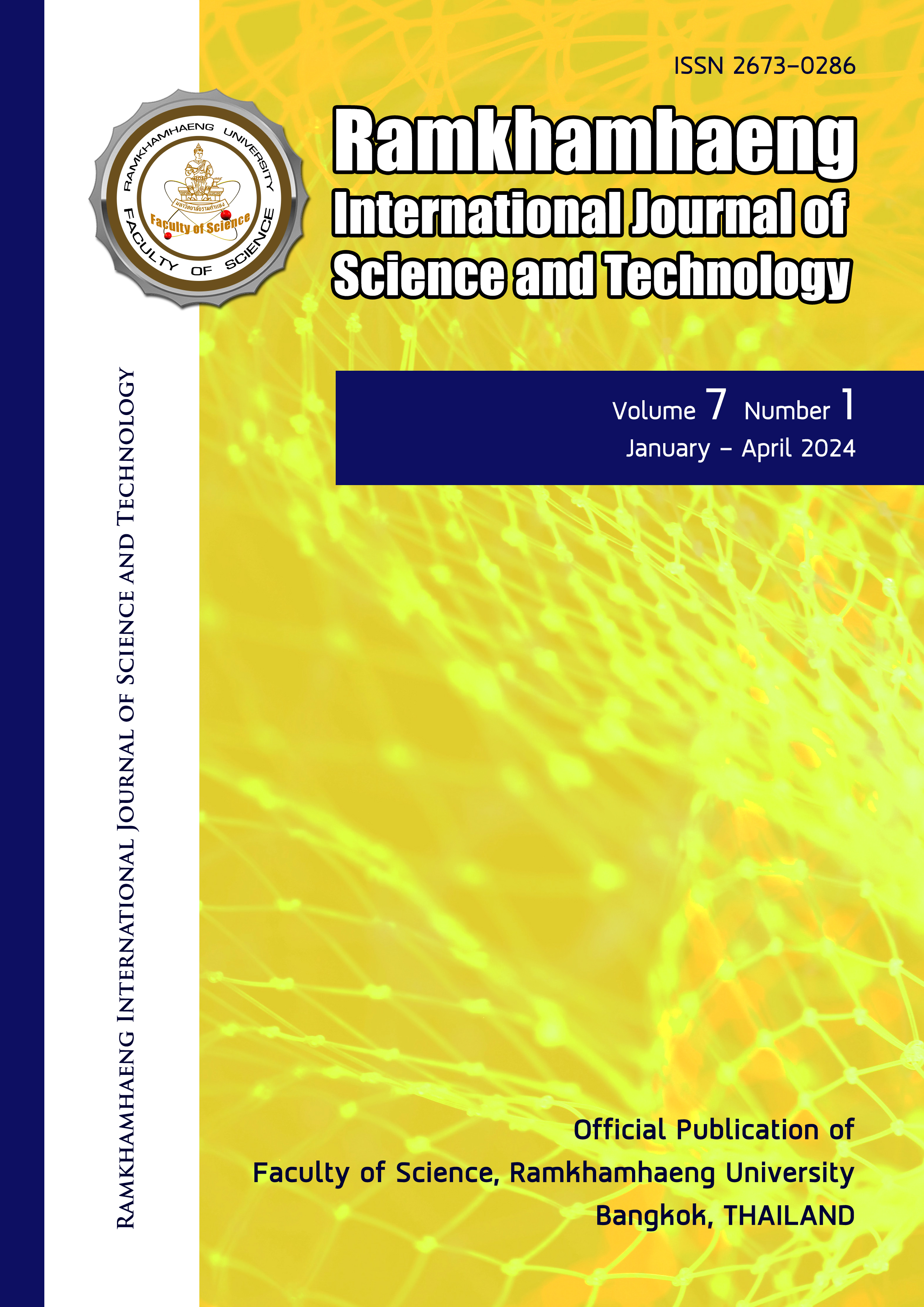Annual variations in diversity, distribution and abundance of the benthic macrofauna in the two most recreational sandy beaches on Sichang Island, Chonburi Province, in the Eastern Gulf of Thailand
Keywords:
Sandy beach, benthic macrofauna, biodiversity, distribution, abundanceAbstract
Field study was conducted from January to December in 2022 to examine the diversity, distribution, and species richness of benthic macrofauna in the two famous recreation sandy beaches, Sichang Island, Chonburi Province in the Eastern Gulf of Thailand. At each location, two study stations were selected representing the areas with high tourism activities and low tourism activities. Each study station consisted of three sampling stations allocated at the upper zone, the middle zone and the lower zone. Results showed that there was a significant difference in the diversity index of benthic macrofauna between the two sandy beaches but not for the two study stations or three sampling stations. In conclusion, the results showed no decreasing benthic biodiversity, densities or a change occurring in the community in year-round at the two study stations and sampling stations at Tham Phang Bay and Tha Wang Bay, Sichang Island. As well, the authors suggest the use of Donax sp. as a bio-indicator for human impacts and environmental changes on the sandy beach as they could serve as potentially simple and economical tools for long-term monitoring of irreversible loss in biodiversity.
References
Alonso JAC, Cabrera J (2002) Tourist resorts and their impact on beach erosion at Sotavento beaches, Fuerteventura, Spain. Journal of Coastal Research 36: 1 – 7
Cisneros KO, Smit AJ, Laudien J, Schoeman DS (2011) Complex, dynamic combination of physical, chemical and nutritional variables controls spatiotemporal variation of sandy beach community structure. PloS One 6: 23-24
Defeo O, Alava A (1995) Effects of human activities on long-term trends in sandy beach populations: the wedge clam Donax hanleyanus in Uruguay. Marine Ecology Progress Series 123: 73 – 82
Defeo O, McLachlan A (2005) Patterns, processes and regulatory mechanisms in sandy beach macrofauna: a multi-scale analysis. Marine Ecology Progress Series 296: 1 – 20
Defeo O, McLachlan A, Schoeman DS, Schlacher TA, Dugan J, Jones A, Lastra M, Scapini F (2009) Threats to sandy beach ecosystems: a review. Estuarine Coastal Shelf Science 81: 1 – 12
Davenport J, Davenport JL (2006) The impact of tourism and personal leisure transport on coastal environments: a review. Estuarine Coastal Shelf Science 67: 280 - 292
Ferreira MN, Rosso S (2009) Effects of human trampling on a rocky shore fauna on the Sao Paulo Coast, South eastern Brazil. Brazilian Journal of Biology 69: 993 – 999
Ghosh D, Biswas JK (2015). Macroinvertebrate diversity indices: A quantitative bioassessment of ecological health status of an oxbow lake in Eastern India. Journal of advances in environmental health research 3(2): 78-90.
Jaramillo E, McLachlan A (1993) Community and population responses of the macroinfauna to physical factors over a range of exposed sandy beaches in south-central Chile. Estuarine, Coastal and Shelf Science 37: 615 – 624
Jaramillo E, McLachlan A, Coetxee PH (1993) Intertidal zonation patterns of macroinfauna over a range of exposed sandy beaches in south-central Chile. Marine Ecology Progress Series 101: 105 – 118
Jaramillo E, Contreras H, Quijón P (1996) Macroinfauna and human impact disturbance in a sandy beach of South-Central Chile. Revista Chilena de Historia Natural 69: 655 - 663
Jaramillo E, Contreras H, Quijon P (1996) Macrofauna and human disturbance in a sandy beach of south-central Chile. Revista Chilean de Historia Natural 69: 655 – 663
Lercari D, Defeo O (2003) Variation of a sandy beach microbenthic community along a human-induced Environmental gradient. Estuaries Coastal and shelf Science 58S: 17 – 24
McLachlan A (1997) Composition, distribution, abundance and biomass of the macrofauna and meiofauna of four sandy beaches. Zoological Africa 12: 279 – 306
Moffett MD, McLachlan A, Winter PED, De Ruyck AMC (1998) Impact of trampling on sandy beach macrofauna. Journal of Coastal Conservation 4: 87 – 90
Martinez MJR, Delgado MCR, Moyano JES, Garcia FJG (2015) Response of intertidal sandy beach macrofauna to human trampling: An urban vs. beach system approach. Marine Environmental Research 103: 36 – 45
Rodgers KS, Cox EF (2003) The effects of trampling on Hawaiian corals along a gradient of human use. Biological Conservation 112: 383 – 389
Rossi F, Forster RM, Montserrat F, Ponti M, Terlizzi A, Ysebaert T, Middelburg JJ (2007) Human trampling as short-term disturbance on intertidal mudflats: effects on macrofauna biodiversity and population dynamics of bivalves. Marine. Biology 151: 2077 – 2090
Schlacher TA, Thompson LMC (2008) Physical impacts caused by off-road vehicles (ORVs) to sandy beaches: spatial quantification of car tracks on an Australian barrier island. Journal of Coastal Research 24: 234 - 242
Schlacher TA, Thompson LMC (2012) Beach recreation impacts benthic invertebrates on ocean-exposed sandy shores. Biological Conservation 147: 123 – 132
Vieira JV, Borzone CA, Lorenzi L, Carvalho FG (2012) Human impact on the benthic macrofauna of two beach environments with different morphodynamic characteristics in Southern Brazil. Brazilian Journal of Oceanography 60: 135 – 148
Wilcock FA, Carter RWG (1997) An environmental approach to the restoration of badly eroded sand dunes. Biological Conservation 11: 279 – 291
Wolcott TG, Wolcott DL (1984) Impact of off-road vehicles on macroinvertebrates of a Mid-Atlantic beach. Biological Conservation 29: 217 – 240
Downloads
Published
Issue
Section
License
Copyright (c) 2024 Ramkhamhaeng International Journal of Science and Technology

This work is licensed under a Creative Commons Attribution-NonCommercial-NoDerivatives 4.0 International License.
Copyright Notice: a copyright on any article in the published journal is retained by the Ramkhamhaeng International Journal of Science and Technology. Readers or Users grant the right to use of the Article contained in the Content in accordance with the Creative Commons CC BY-NC-ND license and the Data contained in the Content in accordance with the Creative Commons CC BY-NC-ND.



